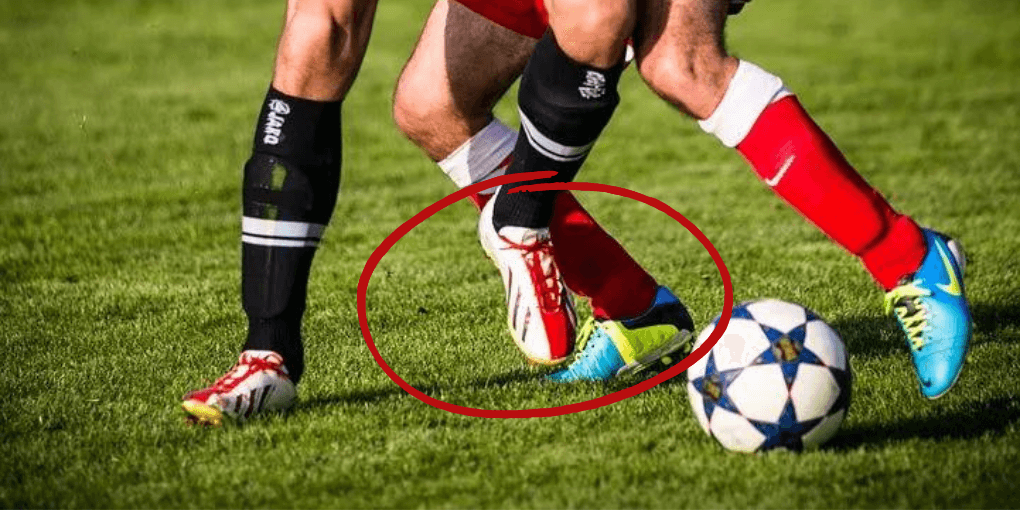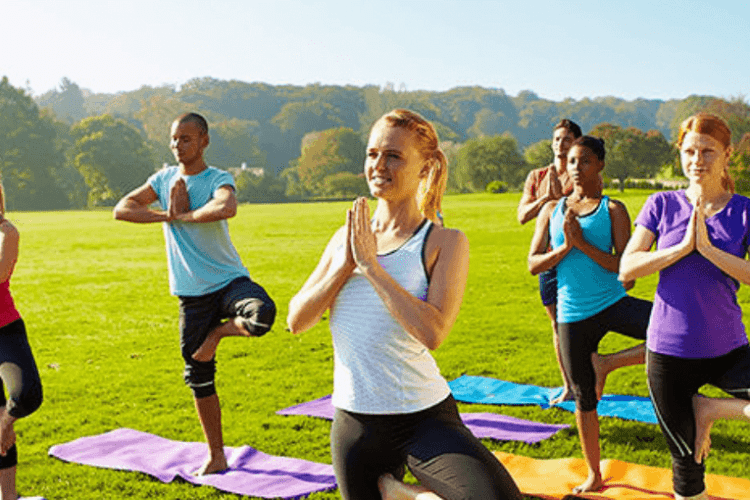Impact of Soccer Cleats on Injury Prevention: A Comprehensive Guide
Have you ever wondered if the cleats you wear on the field could be your secret weapon against injuries?

Well, I’m here to tell you, my friends, that the right pair of soccer cleats can help in injury prevention. Yes, you heard it right.
Have you ever thought about this? Me neither unless I saw the result for myself.
You lace up your cleats to play your best game while staying injury-free, right? The right cleats can make a huge difference in your game. It’s not only about looking cool; it’s about playing smart.
A study by the National Institutes of Health shows that wearing the right shoes helps soccer players avoid getting hurt.
But how do we choose the perfect pair?
Join me on this exciting journey as I share my knowledge and experiences with soccer cleats. I’ll share how to choose the right one and how it helps you prevent injuries. Let’s begin!
Anatomy of a Soccer Cleat
First, you need to know the features of soccer cleats that help prevent injuries.
Upper
The upper part of the soccer cleat is the outside that wraps around your feet. It’s usually made of materials like synthetic leather or mesh. The upper provides comfort and protection for your feet.
It also allows your feet to breathe. So, they don’t get too sweaty in the playground.
Outsole
The outsole is the bottom part of the cleat. It’s made of strong and durable materials like rubber or thermoplastic polyurethane (TPU).
The outsole provides you with stability and traction. It helps you stay balanced and prevent slips and falls.
Studs
Studs are the little bumps on the bottom of the cleat’s outsole. They come in different shapes and sizes, like conical or blade-shaped.
These studs dig into the ground and give you a grip while running and changing direction quickly. They also help prevent your feet from getting stuck in the grass or turf.
Cushioning
Cushioning is like soft padding inside the cleat. It helps absorb shock from jumping, running, and landing. It reduces the impact on your feet, ankles, and knees by protecting them from injuries.
So, when you jump up to head the ball or land after a high jump, the cushioning gives you a comfy landing.
According to a study by Sage Journals, soccer cleats with cushioning provide better shock absorption. It helps to decrease the risk of foot and ankle injuries.
So, wearing cleats with good cushioning can help prevent injury.
Proper Fit
It’s super important to wear cleats that fit your feet properly. If your cleats are too tight or too loose, they can cause discomfort and even increase the risk of injuries.
Know About Different Types of Soccer Cleats
There are various types of soccer cleats for different playgrounds. Each of them has some special features that work in injury prevention.
- Ground Cleats: These are made for playing on natural grass or hard ground. They have studs or blades on the bottom that provide excellent traction on the grass. It helps you run, change direction, and kick the ball with stability.
- Turf Cleats: Turf cleats are specially made for artificial turf fields. They have shorter, flatter studs or rubber nubs on the bottom. These cleats offer traction on the turf while ensuring that you won’t get stuck or slip on the surface. They provide stability and are more durable for playing on artificial surfaces.
- Indoor Cleats: Indoor cleats are for playing soccer on indoor courts or smooth surfaces. They have a flat, non-marking rubber sole that provides grip without damaging the floor. These cleats also have better cushioning for shock absorption on hard indoor surfaces.
- Multi-Ground Cleats: These cleats are versatile. So, you can use them on both natural grass and artificial turf. They usually have a combination of studs and rubber nubs on the sole. It provides traction and stability on different surfaces. If you often play on different types of fields, multi-ground cleats can be a good option for you.
- Soft Ground Cleats: Soft ground cleats are designed for playing on wet or muddy fields. They have longer studs that can stick to the softer ground. It gives you traction and prevents slipping. So, it’s important to switch to soft ground cleats when playing in these conditions to avoid injuries caused by sliding.
What Are Some Common Soccer Injuries?
According to the American Academy of Pediatrics, the rate of soccer-related injuries is higher than in other sports. These injuries cover a wide range, from minor sprains to more serious fractures.
- Sprained Ankles: Ankle sprains are among the most common injuries in soccer. If you twist your ankle while running or change direction, it can result in a sprain. This happens when the ligaments that hold the ankle together get stretched or torn.
- Knee Injuries: Soccer players often face knee injuries. They especially get hurt in a ligament called the anterior cruciate ligament (ACL). A sudden change in direction, a collision, or landing incorrectly can lead to ACL injuries. These injuries often need surgery and rehabilitation.
- Shin Splints: Shin splints cause pain in the front part of the lower leg. Running on hard surfaces or wearing the wrong type of shoes causes irritation and inflammation in the muscles.
- Concussions: These are not common but can happen when players collide with each other or with the ball. A blow to the head can result in a concussion, which is a mild traumatic brain injury. It’s crucial to recognize the symptoms and seek proper medical attention if they happen.
- Muscle strains: It can happen in the hamstrings and groin area. They occur during sudden accelerations, kicks, or overstretching. These injuries can cause pain and discomfort. So, if it happens, you need to take proper rest for recovery.
- Fractures: Fractures can occur in soccer due to a collision or a hard fall. It requires immediate medical attention and often results in a long recovery period.
What Is the Role of Soccer Cleats in Injury Prevention?
A study published in Sports Medicine shows that using cleats with good grip and stability can lower the chance of getting hurt while playing. Let’s see how these cleats help you play safely and prevent injuries:
- Grippy Soles: Cleats have special bottoms that grip the ground. It helps you stay balanced and avoid slipping. This means you’ll have fewer falls when we’re making those awesome moves.
- Stability: These cleats provide stability for your feet. They help you run, change direction, and make quick movements on the field. The studs help prevent loss of balance and reduce the risk of ankle sprains.
- Strong Support: These cleats give your feet strong support to prevent twists and sprains. With their sturdy design, cleats keep your feet safe and secure while you’re playing.
- Cushiony Comfort: Inside cleats, there’s cushioning like fluffy clouds. It absorbs shock and protects your feet from hard impacts. This helps reduce the risk of bruises and keeps you comfy throughout the game.
- Proper Fit: Soccer cleats that fit well are essential for injury prevention. Cleats come in all sizes, and finding the right fit is crucial for keeping your feet happy and healthy. Snug-fitting cleats can prevent your feet from sliding inside the shoes.
- Weight Distribution: Cleats are designed to distribute your body weight evenly on your feet. It reduces strain on specific muscles or joints. By maintaining a balanced weight distribution, cleats help prevent overuse injuries and fatigue.
So, wearing the right cleats can make a significant difference in injury prevention. It worked for me and many other people. So, surely, it’ll work for you too.
How to Choose the Right Cleats for Injury Prevention
Selecting the right cleats is crucial to keeping you safe and enjoying the game. Here I’m giving some easy tips to choose the right one for you:
Know Your Field
Different fields have different surfaces, like grass, turf, or indoor courts. You need to pick cleats that match the field you’ll be playing on to get the best grip and support.
Think About Your Position
Are you a speedy forward, a strong defender, or a midfield expert? Consider your position on the field when choosing cleats. Each position might benefit from specific features.
For example, extra traction for defenders or a lightweight design for forwards.
Check the Fit
Cleats should fit snugly but not too tight. Make sure there’s a little space between your toes and the end of the cleats to prevent blisters and discomfort. It’s like finding the perfect-sized glove for your feet!
Try Them On
Before buying, you must try on different cleats and walk around a bit to see how they feel.
Pay attention to any pressure points or areas that rub against your feet. If it feels perfect, then that’s the one for you.
Consider Closure Types
Cleats come with different closure systems, like laces, Velcro, or slip-on. You can choose the closure type that feels most comfortable and secure for you.
Look for Supportive Features
Cleats with extra ankle support or cushioned insoles can help prevent injuries like sprains and strains.
You should check for these supportive features to keep your feet and ankles safe during intense gameplay.
Think About Durability
Quality cleats are built to last through many games and practices. You should look for durable materials and strong construction to ensure your cleats stay in top shape for a long time.
Know About Ankle Support and Soccer Cleats
Understanding ankle support and soccer cleats is important to keep your ankles safe on the field.
- Importance of Ankle Support: It means having extra protection around our ankles to prevent injuries. It keeps your ankle safe from twists or sprains during intense soccer games.
- Types of Ankle Support in Cleats: Some cleats have built-in ankle support. It means they come with extra padding or higher collars around the ankle area. Other cleats have low collars that offer less ankle support but more freedom of movement.
- Benefits of Ankle Support: Cleats with ankle support provide stability. It helps reduce the risk of twisting or rolling your ankles during quick movements.
- Consider Your Playing Style: If you move fast and change directions a lot, cleats with ankle support can help you stay steady and feel more confident.
So, by understanding the importance of ankle support in soccer cleats, you can make informed decisions. This will help keep your ankles safe and injury-free while enjoying the game you love.
Conclusion
In conclusion, soccer cleats are crucial for injury prevention on the soccer field.
Having the correct cleats is essential for keeping yourself safe while playing. However, safety isn’t only about the gear you wear; it’s also about how you play the game.
So, it’s important to make sure you have the right pair of cleats that fit your feet well and suit the playing surface.
This also ensures you have the necessary support and traction to move confidently. So, lace up your cleats, hit the field, score some goals, and have a blast.
FAQs
It's because soccer cleats provide grip and support to help you stay balanced and stable on the field.
Cleats should fit snugly but not too tight. There should be a little space between your toes and the end of the cleats.
You should walk around in the cleats to make sure they feel comfortable and secure.
It's good to replace your cleats when they start to show signs of wear and tear.
For example, worn-out studs or holes in the upper material. Generally, cleats should be replaced every 6-12 months if you play regularly.
Absolutely! The right cleats can improve your performance by providing better traction, support, and comfort.
When you feel confident and comfortable in your cleats, you can focus on playing your best game without worrying about getting hurt.


